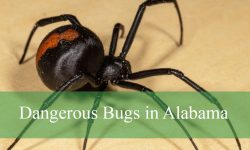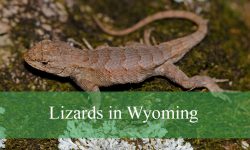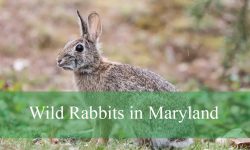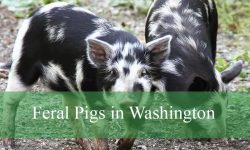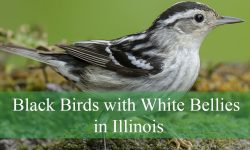If you’ve ever walked through a Utah meadow or desert plain and noticed small flashes of movement among the grasses, chances are you’ve encountered one of the state’s many grasshopper species. These remarkable insects thrive across Utah’s diverse landscapes, from mountain valleys to arid rangelands, adding energy and motion to the summer ecosystem.
Utah is home to more than twenty distinct types of grasshoppers, each adapted to its own habitat and diet. Some species, like the Differential Grasshopper, favor open farmlands, while others, such as the Creosote Bush Grasshopper, survive in dry desert basins. Their colors, shapes, and flight styles vary greatly, offering fascinating opportunities for observation and study.
Understanding these grasshoppers helps reveal the delicate balance of Utah’s natural environment. While a few species can affect crops, most play essential roles as herbivores and prey for birds, reptiles, and mammals. Observing them closely not only enriches outdoor experiences but also deepens appreciation for the state’s unique insect diversity.
Common Types of Grasshoppers Found in Utah
Differential Grasshopper (Melanoplus differentialis)
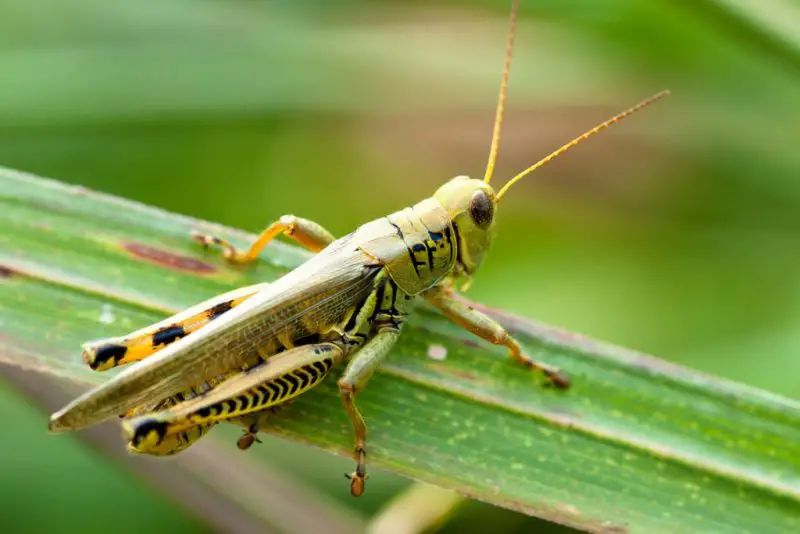
The Differential Grasshopper is one of Utah’s most recognizable species, easily identified by its bright yellowish-green body and distinctive black herringbone pattern on its hind legs. Adults typically measure about 1.5 to 2 inches in length, with females being slightly larger than males. Their wings are well-developed, extending beyond the tip of the abdomen, allowing them to fly considerable distances during warm months.
This species thrives in open grasslands, agricultural fields, and weedy roadsides across Utah. It feeds on a wide range of plants, including corn, wheat, alfalfa, and native grasses, making it a common pest in farmland areas. The Differential Grasshopper prefers sunny, dry habitats and can often be found basking on the ground or on low vegetation during the day.
They are most active between late June and early September when temperatures are high. Observation is easiest during midday when adults emerge to feed and mate. After mating, females deposit egg pods in the soil, which remain dormant through winter and hatch the following spring as temperatures rise.
Migratory Grasshopper (Melanoplus sanguinipes)
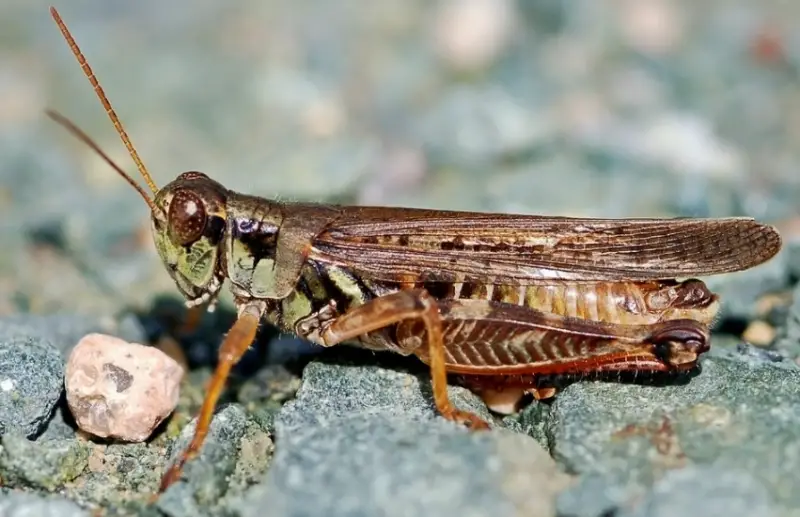
The Migratory Grasshopper is a widespread species found throughout Utah’s rangelands and mountain foothills. Adults are medium-sized, measuring about 1 to 1.5 inches long, and display shades of brown, tan, or olive with a mottled pattern that blends well with dry soil and vegetation. Their hind legs are marked with faint bands, and the wings are long and narrow, suitable for long-distance flights.
This species is highly mobile, capable of forming dense swarms that migrate across large areas in search of food, particularly during dry summers. It feeds primarily on grasses, grains, and other crops, often causing damage to rangeland and agricultural fields. The Migratory Grasshopper prefers semi-arid plains, grasslands, and pastures with sparse vegetation.
You can observe them most easily from June through August, especially in open areas with tall grasses. During early morning and late afternoon, they can be seen feeding or resting on sunlit vegetation. Nymphs hatch in late spring, progressing through several stages before becoming fully winged adults in midsummer.
Red-legged Grasshopper (Melanoplus femurrubrum)
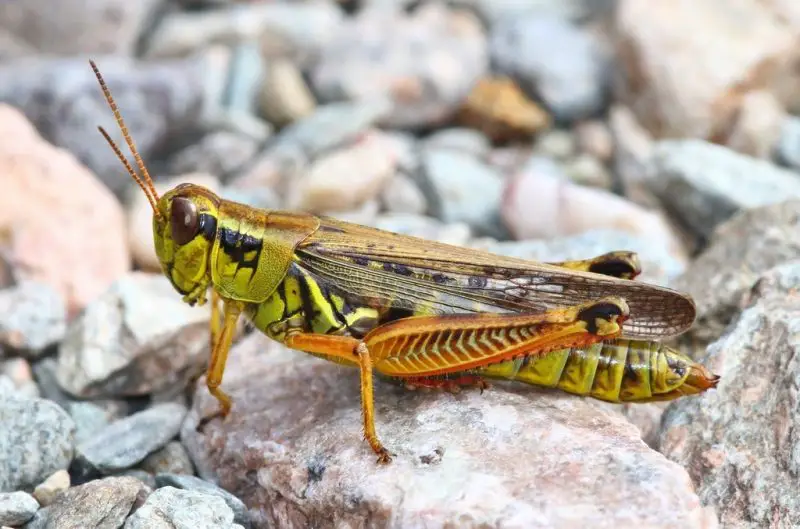
The Red-legged Grasshopper is a small to medium-sized species, easily identified by its reddish hind legs and brownish-green body. Adults measure around 0.8 to 1.2 inches long, with short antennae and sturdy hind femora that give them a powerful jump. The underbelly often has a pale yellow tint, and the wings are typically clear with faint markings.
This species is common in meadows, gardens, and open grassy areas across Utah, especially near irrigation ditches and lowland fields. It prefers moist environments compared to many other grasshopper species and feeds mainly on grasses, clovers, and alfalfa. Because of its adaptability, it thrives in both natural and agricultural settings.
The best time to spot Red-legged Grasshoppers is between July and September when adults are most active. They are diurnal and frequently seen basking in sunlight or flying short distances when disturbed. Their populations often peak in late summer, and they play a crucial role in the food web as prey for birds and small mammals.
Two-striped Grasshopper (Melanoplus bivittatus)
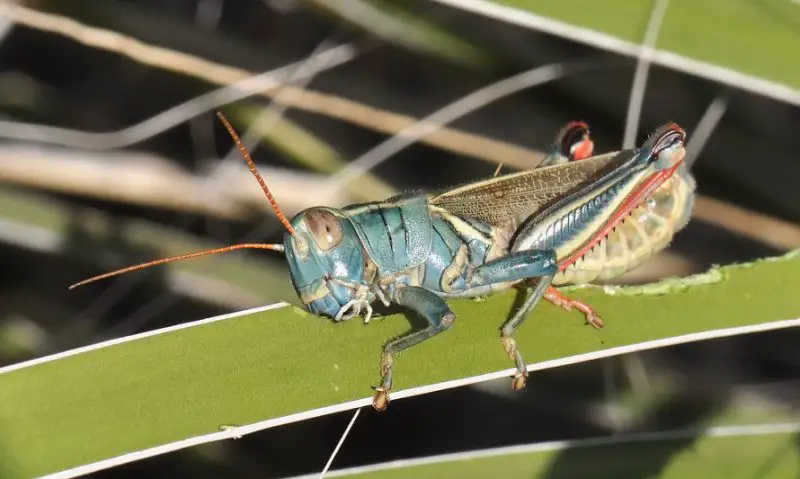
The Two-striped Grasshopper is one of the largest and most easily recognized grasshoppers in Utah. Adults reach lengths of 1.5 to 2.2 inches and are named for the two pale yellow stripes running from their eyes down the back of the thorax. Their coloration varies from olive green to brown, and the hind wings are transparent with a faint yellow hue.
This species inhabits grassy fields, gardens, and croplands, feeding on a variety of plants such as corn, wheat, and sunflowers. It is a strong jumper and flyer, often moving between fields during late summer. Due to its voracious appetite, the Two-striped Grasshopper can become a serious agricultural pest when populations increase dramatically.
They are most active in July and August, especially during warm afternoons. Observation is easiest in open fields and along roadsides where they rest on tall grass stems. Females lay their eggs in soil clumps during late summer, with nymphs emerging in spring as temperatures rise.
Packard’s Grasshopper (Melanoplus packardii)
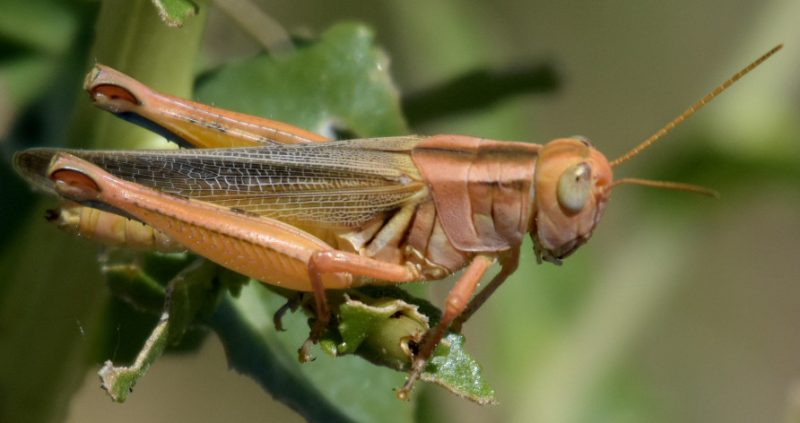
Packard’s Grasshopper is a medium-sized species native to Utah’s prairies and dry rangelands. Adults are about 1 to 1.4 inches long, typically light brown or gray with darker mottling on the wings and back. Their hind legs are banded with black and yellow, while the face appears slightly slanted, a characteristic feature of the Melanoplus genus.
This species favors dry, open habitats with sparse vegetation, often found in sagebrush areas or overgrazed pastures. It feeds mainly on grasses and forbs, occasionally venturing into croplands during periods of food scarcity. Unlike some other grasshoppers, Packard’s Grasshopper is less migratory and tends to remain localized in one area.
You can observe them from late June through early September. They are most visible during midday when temperatures peak and adults become active. The combination of dry heat and sunlight brings them out to feed and mate on bare soil patches and short grasses, making them easy to spot in Utah’s summer landscapes.
Clear-winged Grasshopper (Camnula pellucida)
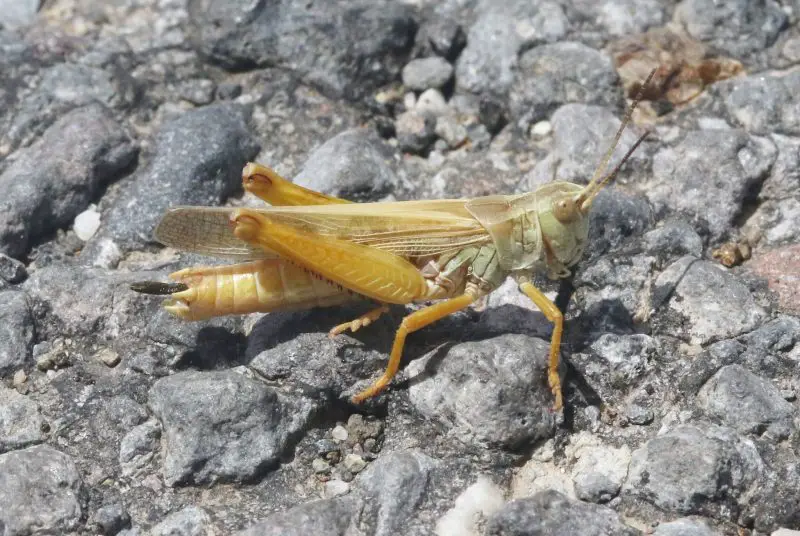
The Clear-winged Grasshopper is a medium-sized species, typically measuring 1 to 1.3 inches in length. Its most distinctive feature is the nearly transparent hind wings, which give it its common name. The body is usually light brown to gray, often with darker mottling on the thorax and wings that helps it blend into dry, sandy soil. The head is slightly pointed, and the hind legs are sturdy with faint crossbands.
This species is one of Utah’s most abundant grasshoppers, especially in high-elevation grasslands, meadows, and agricultural areas. It feeds primarily on grasses and cereal crops such as wheat and barley, sometimes forming large populations capable of causing significant crop damage. The Clear-winged Grasshopper prefers cooler regions and open habitats with sparse vegetation.
They are active from late June through September, depending on elevation. Early morning and midday are the best times to observe them, as they bask in the sun and feed on available vegetation. During cool weather, they often rest motionless on bare soil or low grass, camouflaging perfectly with their surroundings.
Carolina Grasshopper (Dissosteira carolina)
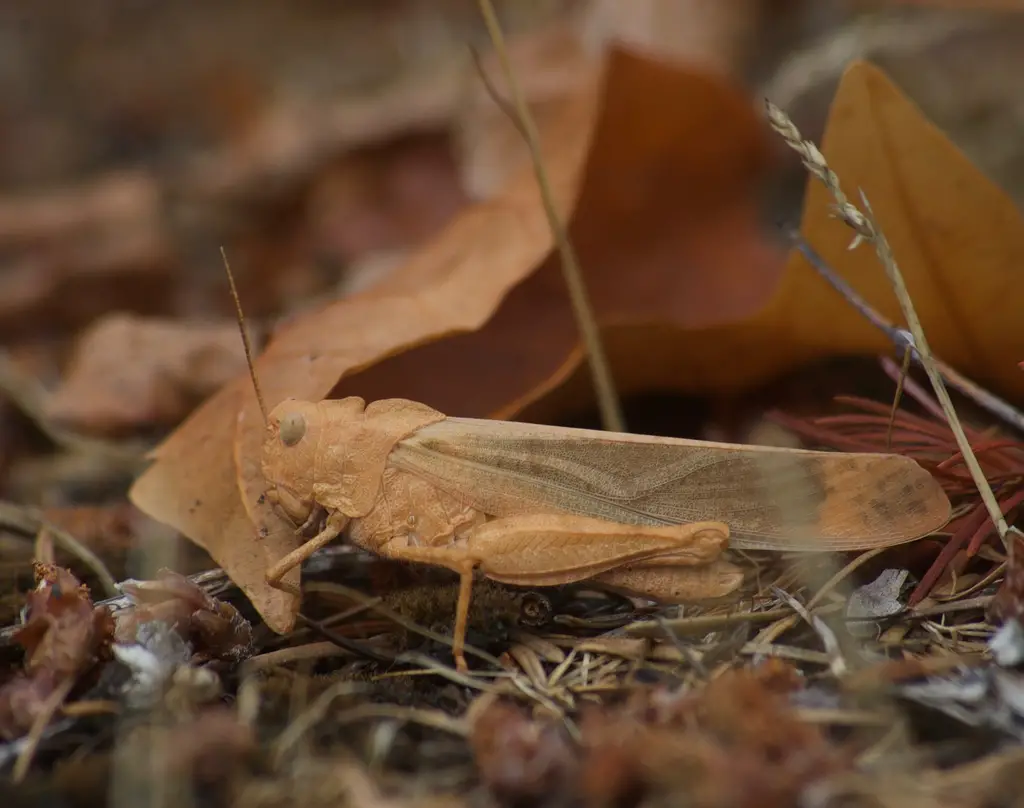
The Carolina Grasshopper, also known as the Black-winged Grasshopper, is a large and powerful flier, reaching lengths of 1.5 to 2 inches. Its forewings are mottled gray or brown, blending into gravel and dry ground, while the hind wings are strikingly black with pale yellow edges, visible only when the insect takes flight. This dramatic flash of color helps startle predators.
This species inhabits open, dry environments across Utah, including roadsides, gravel pits, and sandy plains. It feeds on a variety of grasses and weeds and is often seen perching on bare ground, where its coloration provides excellent camouflage. The Carolina Grasshopper prefers full sunlight and can often be found in disturbed habitats with minimal vegetation.
Adults are most active from mid-July through early October. They are strong daytime flyers, taking off suddenly when approached and gliding several meters before landing. Observation is easiest during warm afternoons when males display their characteristic flight behavior and wing-flashing displays to attract mates.
Pallid-winged Grasshopper (Trimerotropis pallidipennis)
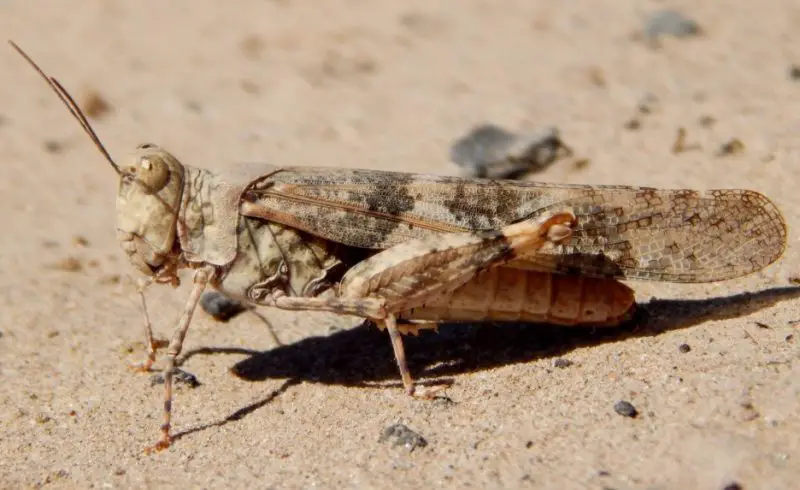
The Pallid-winged Grasshopper is a pale-colored species with a body length ranging between 1.2 and 1.6 inches. Its overall coloration varies from light tan to gray, with mottled markings that help it blend with desert soil. The hind wings are transparent to pale yellow with a darker border, making them visible during flight. Its slanted face and rough-textured thorax are typical of band-winged grasshoppers.
This species thrives in Utah’s arid regions, including desert valleys and rocky foothills. It prefers sandy soils with sparse vegetation, feeding mainly on dry grasses and forbs. Because of its excellent camouflage, it can be difficult to spot until it leaps into flight, revealing its distinct wing pattern.
Pallid-winged Grasshoppers are active between July and September, particularly during the hottest parts of the day. They are often observed sunning on rocks or bare ground in desert areas. Their quick, erratic flight and tendency to perch in open terrain make them one of the most commonly seen species in Utah’s desert ecosystems.
Snakeweed Grasshopper (Hesperotettix viridis)
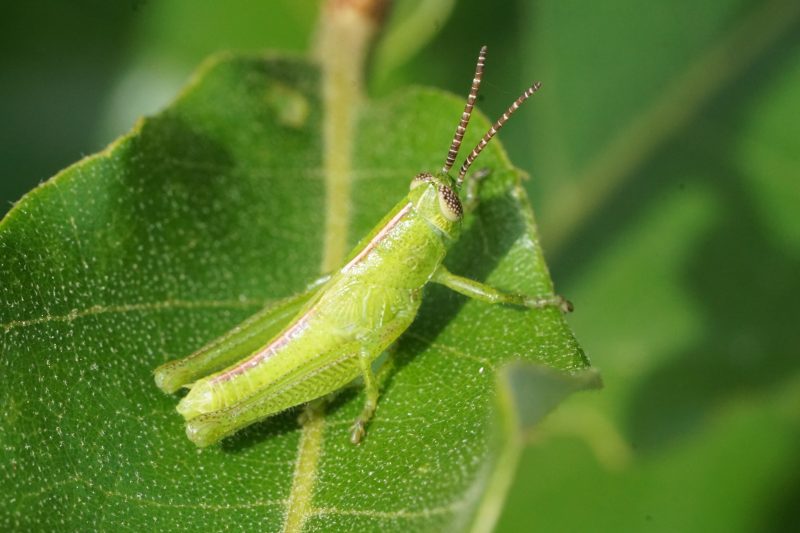
The Snakeweed Grasshopper is a small, vividly colored species, measuring around 0.8 to 1 inch in length. Its body is bright green with purple or pinkish highlights on the sides and hind legs. The face is nearly vertical, and the wings are clear, extending slightly beyond the abdomen. This vibrant coloration helps it blend in with the green foliage of its preferred host plants.
As its name suggests, this species is strongly associated with snakeweed (Gutierrezia sarothrae) and other composite plants. It is found throughout Utah’s dry rangelands, foothills, and desert edges where snakeweed grows abundantly. Unlike many grasshoppers, the Snakeweed Grasshopper feeds almost exclusively on this plant, rarely switching to other vegetation.
You can observe them between late June and early September. They are most active during warm mornings and afternoons, often perched on the upper stems of snakeweed plants. Because of their green coloration and selective feeding habits, they can be spotted easily in areas dominated by snakeweed or similar shrubs.
Short-winged Toothpick Grasshopper (Psoloessa delicatula)
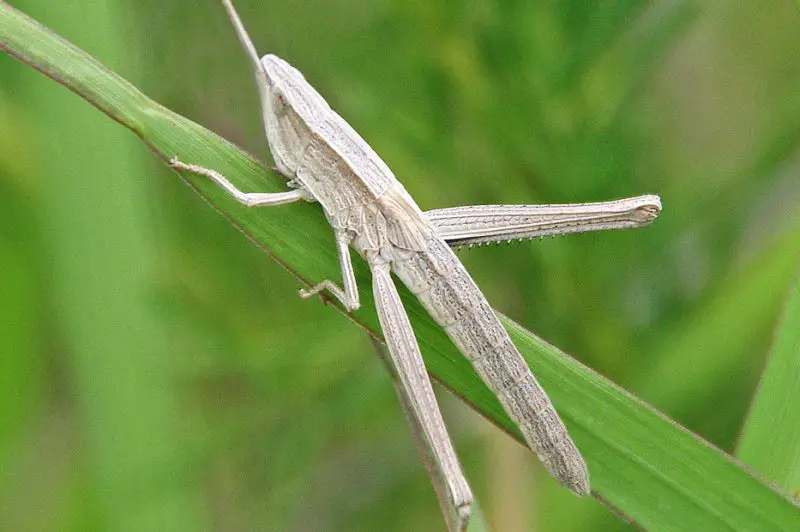
The Short-winged Toothpick Grasshopper is a slender, elongated species that typically measures about 0.7 to 1 inch long. It is light brown or straw-colored, with a narrow body and short wings that usually do not reach the tip of the abdomen. Its antennae are long and thin, and the overall shape gives it a “toothpick-like” appearance, hence its name.
This species inhabits Utah’s open plains, sandy areas, and lightly vegetated rangelands. It prefers dry, grassy regions with minimal shrub cover, feeding on fine grasses and small herbs. Because of its small size and cryptic coloring, it blends seamlessly with the ground, making it challenging to spot unless it moves.
The Short-winged Toothpick Grasshopper is most active from July through late August. Observers can find them during warm daylight hours, particularly in mid-afternoon when they move through grass stems in search of food. Their short wings limit their flight range, so they are usually seen hopping low to the ground instead of taking long flights.
Cretaceous Grasshopper (Trimerotropis cretacea)
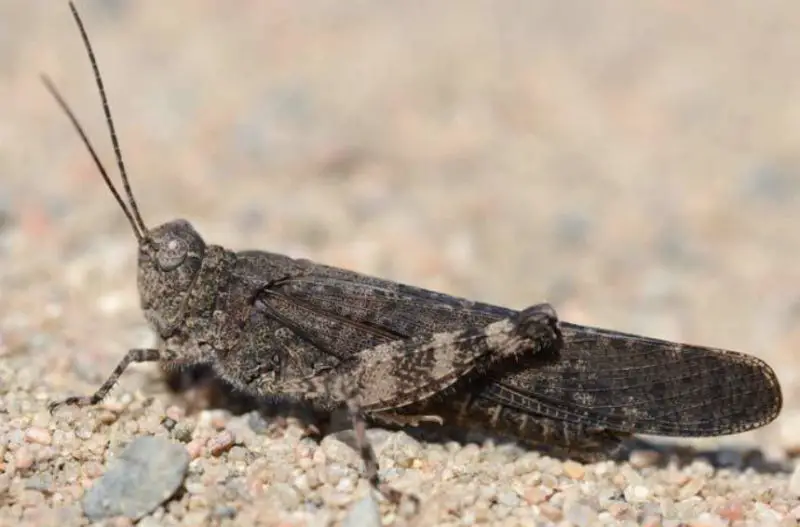
The Cretaceous Grasshopper is a medium-sized band-winged species, typically measuring between 1.2 and 1.5 inches in length. Its coloration ranges from grayish-brown to tan, mottled with darker patches that help it blend into rocky and sandy terrain. The hind wings are pale yellow with a dark outer band, visible only in flight. Its body and legs are rough-textured, giving it a rugged appearance suitable for its arid environment.
This species inhabits Utah’s dry foothills, rocky slopes, and desert grasslands. It thrives in open habitats with sparse vegetation, especially where gravelly soil and stones dominate. The Cretaceous Grasshopper feeds mainly on bunchgrasses and other low-growing plants, playing a role in maintaining ecological balance in semi-desert ecosystems.
They are active from July through early September. Observation is best during warm midday hours when adults are basking on rocks or flying short distances in search of food. Their flight is strong but short, accompanied by the flash of their pale yellow hind wings that quickly vanish once they land.
Big-headed Grasshopper (Aulocara elliotti)
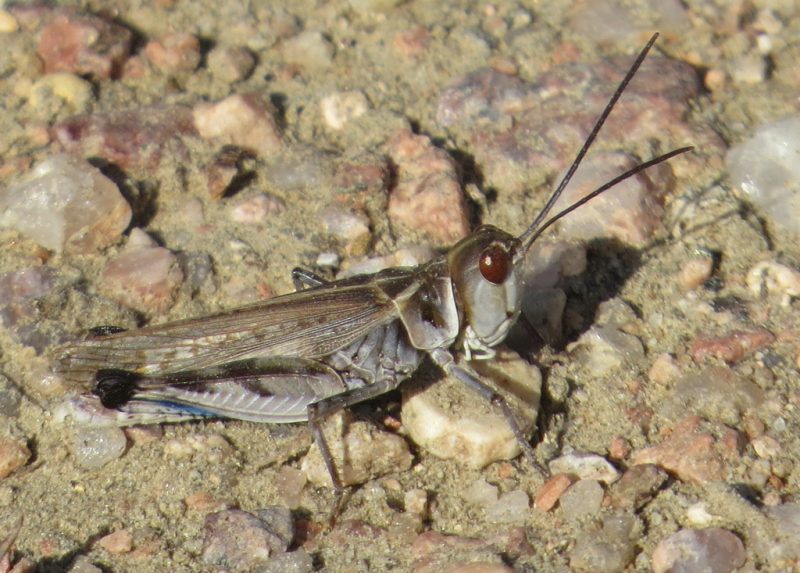
The Big-headed Grasshopper is easily recognized by its disproportionately large head and short, compact body measuring about 0.8 to 1 inch long. Its coloration is generally grayish-brown or greenish-gray, blending perfectly with dry prairie and sandy soils. The hind wings are clear, and its legs are well-adapted for quick jumps rather than long-distance flights.
This species is widespread across Utah’s prairies, sagebrush flats, and rangelands. It favors dry, open areas with sparse vegetation and feeds primarily on native grasses. Due to its small size and inconspicuous coloration, it often goes unnoticed until it leaps away suddenly when approached.
They are most active from late June through August. Observers can find them in the heat of the day, hopping among grasses or resting motionless on bare soil. Because they rely heavily on camouflage, their detection requires careful observation of ground movement in sunny, open habitats.
Little Pasture Grasshopper (Melanoplus infantilis)
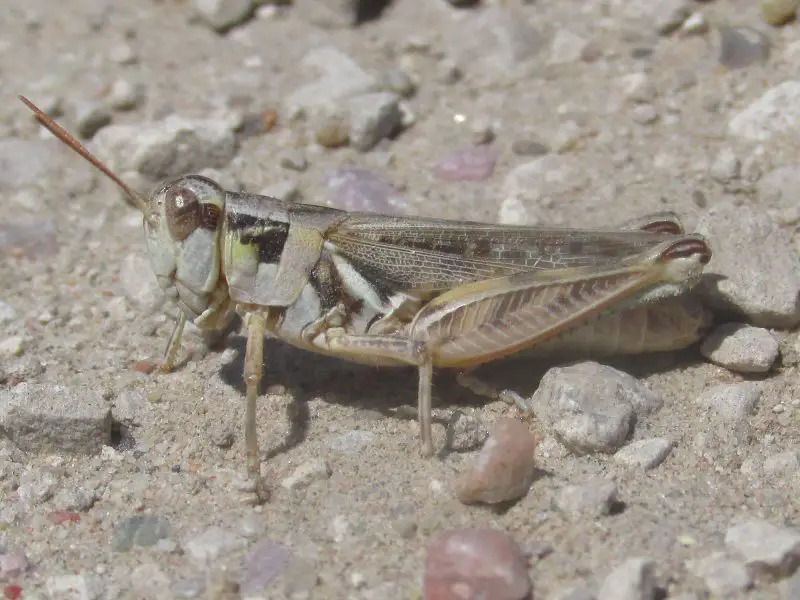
The Little Pasture Grasshopper is one of Utah’s smaller species, with adults measuring about 0.6 to 0.9 inches in length. Its coloration ranges from light brown to olive-gray, often with faint darker markings on the back. The hind femora are strong and reddish, while the wings are short, extending just past the abdomen in adults.
This species is common in Utah’s grasslands, meadows, and lightly grazed pastures. It feeds primarily on grasses and small forbs and tends to avoid heavily vegetated or wet areas. Because of its small size, it’s rarely a significant agricultural pest but remains a vital food source for birds and small mammals.
You can observe Little Pasture Grasshoppers from late June to early September. They are active during sunny days, moving low among grasses or hopping short distances when disturbed. Their quiet behavior and small stature make them well-suited to Utah’s open rangelands.
Big Stink Grasshopper (Arphia pseudonietana)
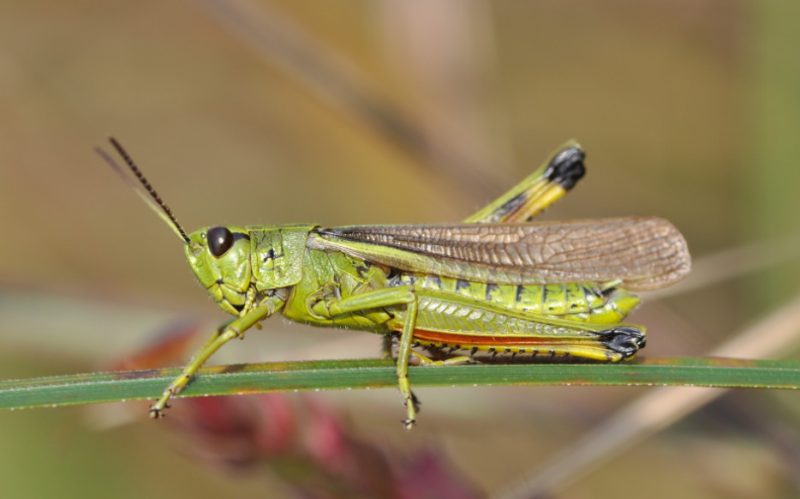
The Big Stink Grasshopper is a large and robust species, typically 1.5 to 2 inches long, known for its bright hind wings and distinctive odor emitted when handled. Its forewings are mottled brown and gray, while the hind wings are vivid yellow or orange with a dark outer band. This band-winged grasshopper produces a crackling sound during flight, a behavior used to deter predators and attract mates.
It inhabits Utah’s dry grasslands, foothills, and rocky slopes, favoring open areas with mixed grasses and sparse shrubs. The Big Stink Grasshopper feeds primarily on native grasses but will occasionally consume forbs. It is well adapted to the state’s arid regions, using its coloration to blend with the surrounding soil and stones.
This species is most active between July and early October. It is easily observed during hot afternoons, flying short distances with loud wingbeats before settling back on the ground. The name “stink grasshopper” comes from the musky odor it releases as a defense mechanism when captured.
Speckle-winged Rangeland Grasshopper (Arphia conspersa)
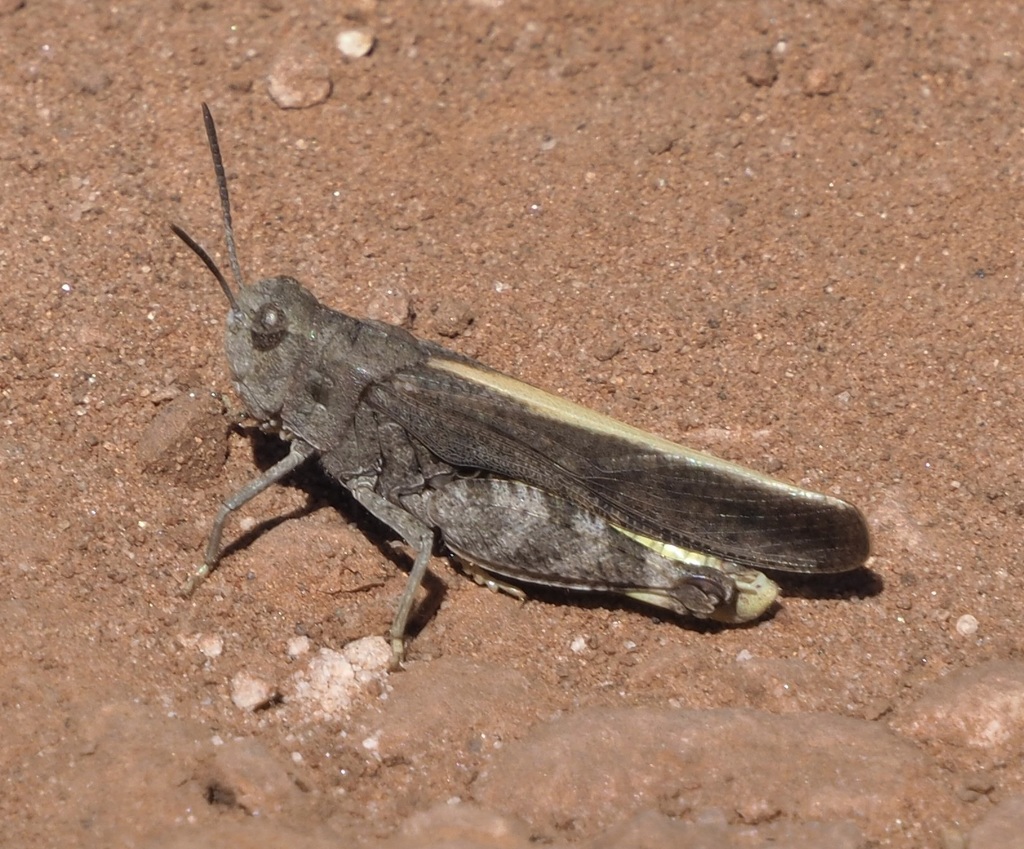
The Speckle-winged Rangeland Grasshopper is a medium-sized species, reaching about 1.2 to 1.6 inches long. It is grayish-brown with darker speckles across the wings and body. The hind wings are yellow-orange with a black border, visible in flight. When perched, its cryptic coloration helps it remain nearly invisible against the rocky soil.
This species thrives in Utah’s rangelands, prairies, and foothill meadows. It feeds mainly on native grasses, particularly blue grama and wheatgrass, and is most common in areas with well-drained, sandy soils. Its flight is strong but short, accompanied by a characteristic snapping sound made by the wings.
Adults are most visible from late June through September, especially in the heat of the afternoon. They can often be seen taking off from open ground, displaying their bright hind wings before quickly landing and blending into the terrain once again.
Lesser Spur-throat Grasshopper (Melanoplus foedus)
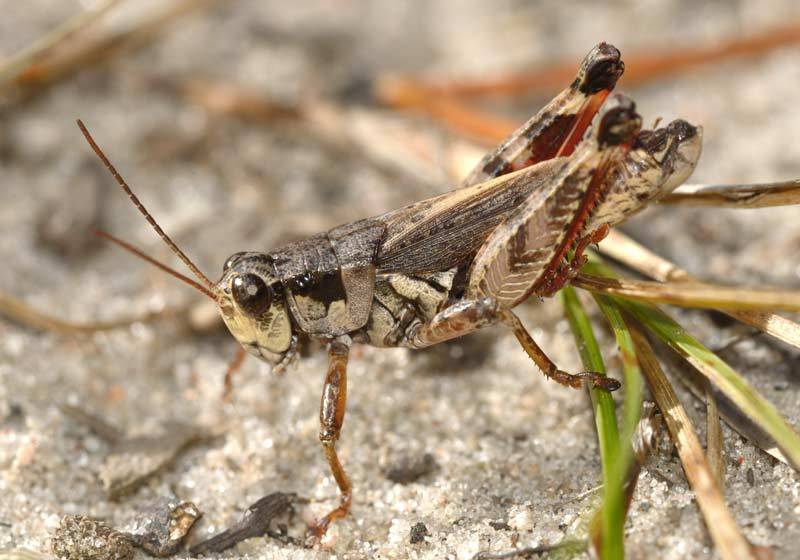
The Lesser Spur-throat Grasshopper is a medium-sized grasshopper, measuring about 1 to 1.3 inches in length. It has a brownish-tan body with darker stripes along the back and a slightly slanted face. The hind femora are reddish or orange with distinct dark bands, and the wings are clear with light venation. The “spur-throat” name refers to a small spine on the underside of the thorax.
This species is widespread in Utah’s dry plains, rangelands, and agricultural margins. It feeds on a broad range of plants including grasses, alfalfa, and other herbaceous vegetation. It prefers dry, sunny areas and can become locally abundant, occasionally reaching pest levels in grazing fields.
You can observe them from late June to early September, most often in the afternoon when they are actively feeding or mating. Their quick, darting jumps and preference for dry open areas make them easy to spot, particularly along dirt roads and grassy hillsides.
White-whiskered Grasshopper (Ageneotettix deorum)
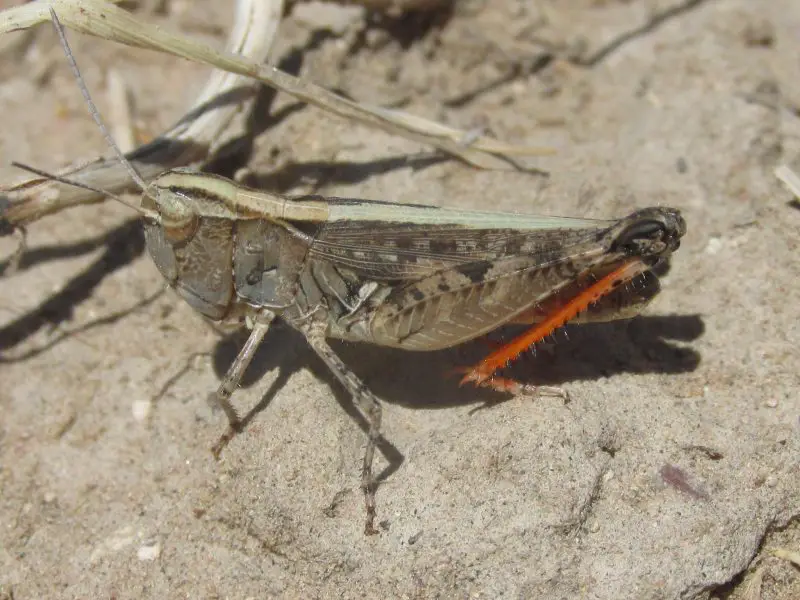
The White-whiskered Grasshopper is a small to medium-sized species, measuring about 0.7 to 1 inch in length. Its body is typically gray or brown with a dust-like texture that allows it to blend seamlessly into sandy or gravelly environments. The species is named for the pale “whisker-like” lines running from the base of its antennae across the head. Its wings are clear, and its hind legs are marked with faint banding.
This grasshopper is among the most common species in Utah’s arid rangelands and semi-desert grasslands. It feeds on short grasses and sparse vegetation, playing an important ecological role in maintaining plant balance in dry ecosystems. The White-whiskered Grasshopper prefers open areas with low grass cover and loose soil for easy movement and egg laying.
They are active from June through early September and are most easily observed during the hottest parts of the day. They move quickly across bare soil and rarely fly far, relying on camouflage for protection. Because of their dusty coloration, spotting them requires careful observation of subtle movements on the ground.
Brown-spotted Range Grasshopper (Psoloessa texana)
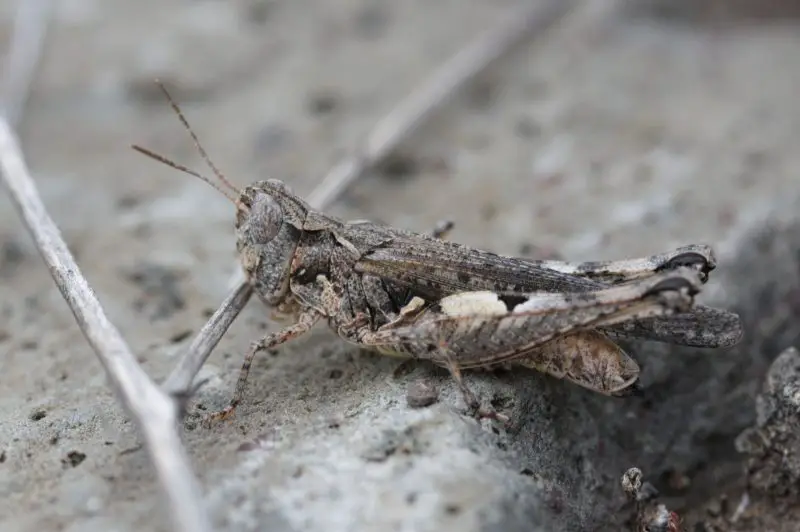
The Brown-spotted Range Grasshopper is a small, slender species reaching about 0.6 to 0.9 inches long. Its body is light tan to sandy brown, covered with irregular darker spots across the wings and thorax. The hind legs are strong and short, adapted for hopping low across dry grassland terrain rather than long-distance flights.
This species inhabits Utah’s open rangelands, prairies, and foothills, where it prefers dry soil and sparse vegetation. It feeds mainly on grasses and small forbs, favoring short-stemmed species. Its coloration and small size make it nearly invisible against the soil background until disturbed, when it jumps abruptly and settles again a few feet away.
They are active between late June and August, especially on warm, sunny days. Observation is easiest during mid-morning and early afternoon when they are feeding or basking on open ground. Due to their abundance in some years, they can be a minor rangeland pest but are usually part of a balanced ecosystem.
Creosote Bush Grasshopper (Bootettix argentatus)
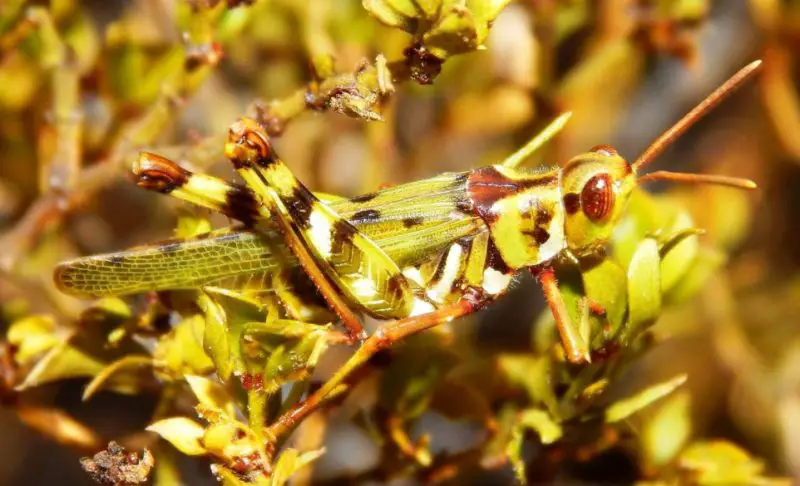
The Creosote Bush Grasshopper is a medium-sized, silvery-green species about 1 to 1.2 inches long. Its coloration often has a metallic sheen that reflects the sunlight, helping it blend with the silvery leaves of the creosote bush. The head is narrow with a slanted face, and the wings are long and transparent, allowing quick movement through desert vegetation.
This unique species is specialized to live among creosote bushes (Larrea tridentata), which dominate the arid desert landscapes of southern Utah. It feeds primarily on creosote leaves, showing remarkable adaptation to the plant’s tough, resinous foliage that most insects avoid. Its coloration and resting posture closely mimic the host plant, providing excellent camouflage.
Creosote Bush Grasshoppers are most active from June through September, particularly during early mornings and late afternoons when temperatures are moderate. Observers can find them perched on creosote stems, often motionless unless disturbed. Their ability to blend so effectively makes them one of the most well-camouflaged desert grasshoppers in Utah.
Striped Slant-faced Grasshopper (Acrida willemsei)
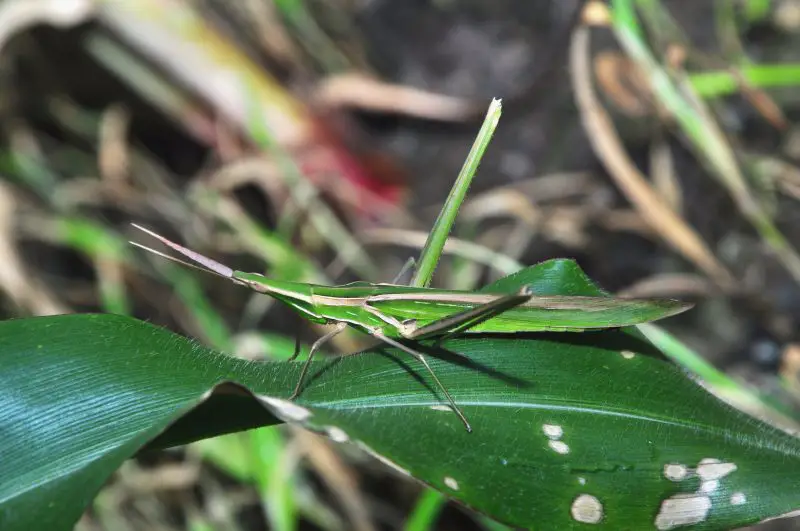
The Striped Slant-faced Grasshopper is a slender, elongated species that reaches about 1.5 to 2 inches in length. It has a distinctly pointed head that slopes forward, giving it the “slant-faced” appearance. The body color varies from light green to straw-yellow, with a narrow dark stripe running down the back. Its long, narrow wings extend well past the abdomen, making it a strong flier.
This species inhabits Utah’s grassy plains, wetlands, and agricultural margins. It prefers tall grasses and reeds, where it remains well-hidden among stems. The Striped Slant-faced Grasshopper feeds on various grasses and sedges and is often seen clinging vertically to plant stalks to mimic vegetation.
They are active from July through early October. Observation is easiest in the morning when dew highlights their bodies or during late afternoon when they move through tall grass. Their gentle flight and vertical resting posture make them one of the most elegant and easily recognizable grasshoppers in the region.
Haldeman’s Grasshopper (Melanoplus haldemanii)
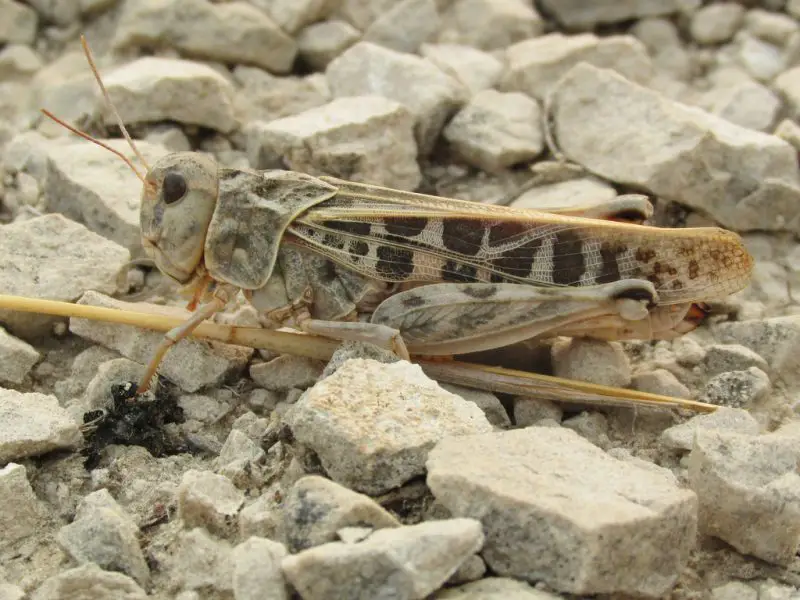
Haldeman’s Grasshopper is a medium to large species, ranging from 1.2 to 1.6 inches in length. It is typically brown or olive-green with faint striping along the back and reddish hind legs. The wings are clear with light brown veins, and the head is slightly slanted. This species has a robust build, typical of the Melanoplus genus.
It inhabits Utah’s dry grasslands, foothills, and meadows, feeding on a wide variety of grasses and herbaceous plants. It is a strong jumper and an agile flier, often moving quickly when disturbed. Because it feeds on diverse vegetation, it adapts well to different habitats, from semi-arid rangelands to cultivated fields.
Adults are most common between July and September. Observers can spot them basking on rocks or perched on tall grasses during sunny afternoons. Their reddish hind legs and large size make them relatively easy to identify among Utah’s mixed grasshopper populations.
Big-headed Sand Grasshopper (Spharagemon collare)
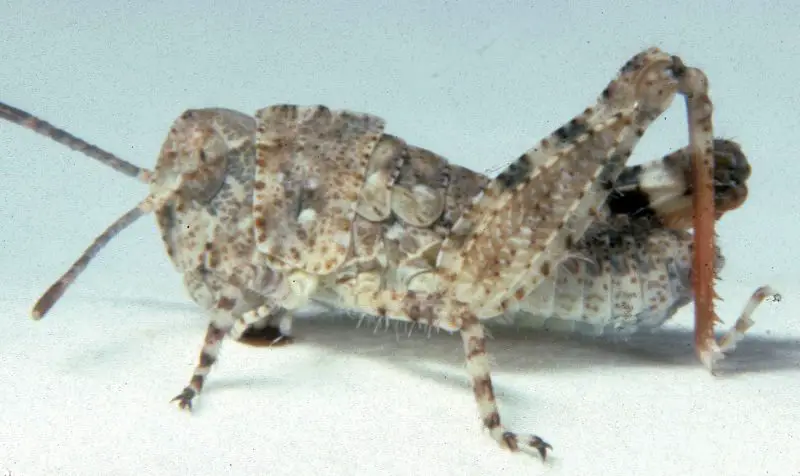
The Big-headed Sand Grasshopper is a stout species, measuring about 1.3 to 1.7 inches long, with a broad, rounded head and rough-textured body. Its coloration varies from light tan to gray with darker mottling and sometimes a subtle orange hue on the hind wings. The short antennae and thick hind legs are adapted for powerful jumps across sandy terrain.
This species is well-adapted to Utah’s sandy deserts, dunes, and dry washes. It prefers open areas with loose soil and sparse grasses, where its coloration provides perfect camouflage. It feeds mainly on coarse grasses and hardy desert plants that survive in the state’s arid climate.
You can observe Big-headed Sand Grasshoppers from mid-July through September. They are active during hot, sunny days and can be seen resting on sand or hopping across dunes. When disturbed, they take short, explosive leaps and quickly settle back into the sand, disappearing almost instantly into their surroundings.
Tips for Observing Grasshoppers in Utah
1. Visit During the Warmest Months
The best time to observe grasshoppers in Utah is between June and September, when adults are most active. Warm, sunny days stimulate movement, feeding, and mating behaviors, making these months ideal for spotting multiple species. Early morning and midday are particularly good times to see them basking on vegetation or bare ground.
2. Choose the Right Habitats
Utah’s grasshoppers occupy a variety of habitats — from high-elevation meadows to desert rangelands. For example, band-winged species like Trimerotropis thrive in rocky desert flats, while Melanoplus species prefer grassy fields and agricultural areas. Visiting areas such as sagebrush plains, foothill grasslands, and sandy washes increases your chances of encountering different species.
3. Watch for Movement Instead of Color
Most grasshoppers blend perfectly with their surroundings, making them difficult to see when still. Instead of scanning for color, look for small flashes of movement—a jump, a flick of wings, or a shadow shifting on the ground. A quiet, patient approach works best to get close without scaring them away.
4. Bring a Field Guide or Macro Lens
A field guide or macro photography lens can help identify subtle differences between species, such as leg markings or wing coloration. Many Utah grasshoppers look similar, so detailed observation is key. Always photograph both the resting posture and the open wings for accurate identification.
5. Respect Their Environment
Grasshoppers play an important ecological role as herbivores and prey for birds, reptiles, and small mammals. Avoid disturbing their habitats, especially during egg-laying season in late summer. When observing or photographing, tread lightly to protect both the insects and their fragile ecosystems.
FAQs about Grasshoppers in Utah
What time of year are grasshoppers most active in Utah?
Grasshoppers in Utah are most active during the summer months, from June to early September. This period provides the warm temperatures they need for feeding and reproduction. Nymphs usually hatch in late spring, and adults appear by midsummer.
Are any grasshoppers in Utah harmful to crops?
Yes, certain species such as the Differential Grasshopper (Melanoplus differentialis) and Migratory Grasshopper (Melanoplus sanguinipes) can become agricultural pests during population booms. They feed on grains, alfalfa, and other crops, sometimes causing localized damage. However, most species do not reach harmful numbers.
Where can I find grasshoppers in Utah?
You can find grasshoppers across rangelands, prairies, desert valleys, foothills, and farmlands. Each species prefers specific environments — for example, the Creosote Bush Grasshopper thrives in desert areas, while the Red-legged Grasshopper prefers moist meadows and irrigated fields.
What do Utah grasshoppers eat?
Most grasshoppers feed on grasses, herbs, and forbs, though a few have specialized diets. The Snakeweed Grasshopper feeds almost exclusively on snakeweed, and the Creosote Bush Grasshopper eats only creosote leaves. Their feeding helps regulate plant populations and supports the desert food chain.
Are grasshoppers active at night?
No, grasshoppers are primarily diurnal—they are active during the day and rest at night. In cooler evening hours, they often hide among vegetation or burrow slightly into the soil to conserve warmth and avoid predators.
Can grasshoppers fly long distances in Utah?
Some species, like the Migratory Grasshopper, are capable of long-distance flights, especially when searching for food. Others, such as the Short-winged Toothpick Grasshopper, have limited flight ability and rely mostly on hopping for movement.
How can I safely photograph grasshoppers?
Approach grasshoppers slowly and avoid sudden movements. Use macro settings or a zoom lens to capture details such as leg coloration and wing markings. Early morning is ideal for photography since grasshoppers are less active and easier to approach while warming up in the sun.

